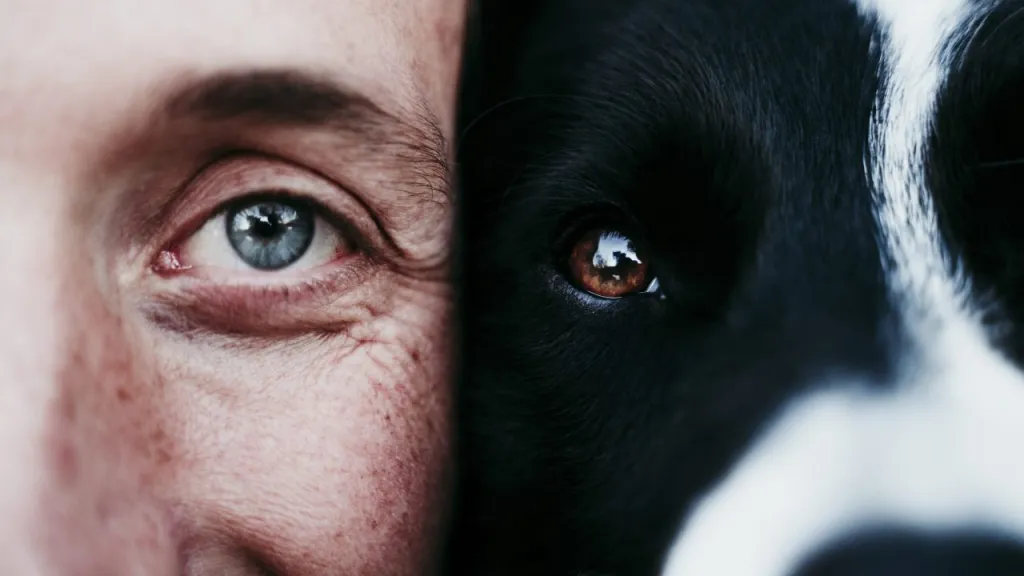Have you ever wondered if your dog sees things the same way you do? While it’s true that dogs see fewer colors than their human counterparts, they still experience life in a colorful and unique way. However, these differences in vision can affect interactions, toy preferences, and the way your dog sees the world.
Are dogs colorblind?
The answer to that is complicated. Color vision is determined by the number of cone cells in the eye that help to detect light wavelengths, divided into colors. Humans have three cones allowing them to determine the differences between red, blue, and green wavelengths. In contrast, some species of shrimp have up to 12 different cone cells, allowing them to see a larger variety of colors and even UV light.
While dogs can’t see in as many colors as a human can, they aren’t colorblind. Dogs possess only two cone cells that help them see blue and yellow light spectrums. They can see color, it’s just a much smaller range than the human eye can detect. To dogs, reds and greens may appear as shades of blue, brown, or gray instead.
How your dog sees the world
Color vision isn’t the only part of being able to see. The positioning of your dog’s eyes allows them to have a wider field of view, up to 270 degrees around them compared to a human’s 180-degree field. While this allows them to see more, it makes their depth perception less accurate. Dogs are also much better than humans at detecting movement and seeing in low light. Like cats, dogs have a tapetum lucidum lining the back of their eye that allows more light to reflect in dark situations. It’s what gives dog eyes that eerie glow in the night.
However, vision isn’t the only factor in your dog’s perception of the world. Their greater sense of smell and hearing gives them extra perceptive skills, making things that smell strongly or squeak loudly more exciting.
How your dog’s vision affects their preferences
Have you ever wondered why your dog likes tennis balls or loud squeaky toys? It’s all in how they sense the world. Tennis balls may be easier for your dog to spot due to their bright yellow hue. Toys that are extra smelly or loud may provide an extra layer of fun for their other senses. Moving objects such as laser pointers, tossed balls, or frisbees also stimulate your dog’s ability to sense motion and their instinct to chase.
It’s important to pick out toys that appeal to your dog specifically. If you have a breed such as a Golden Retriever, a ball that is easy to spot and run after may be more appealing than a stationary stuffed toy. If your dog is food motivated, puzzle toys with moving parts that can be stuffed with treats can help stimulate their mind, body, and desire for smelly rewards.
Knowing how your dog sees the world differently from you can help when picking out a new favorite toy or treat. It can also help you better understand how your dog thinks and interacts with the world around them.
Interested in more fun science facts about dogs? Check out the science behind puppy-dog eyes. Or, see how science can help you choose the best toy for your dog.









